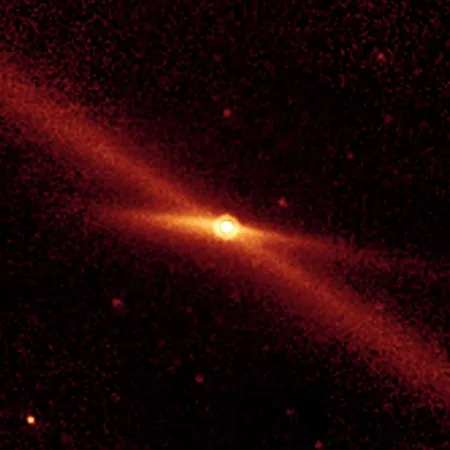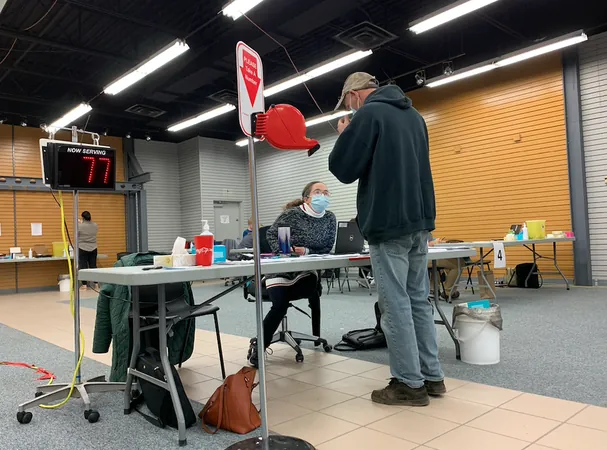
Great News! Comet Encke's Debris Contains Fewer Giant Asteroids Than Previously Thought
2024-10-09
Author: Emma
Introduction
In the vast expanse of our Solar System, comets often leave a trail of debris in their wake, stirring both excitement and concern among astronomers. One well-known comet, Comet Encke, has been in the spotlight due to a stream of debris known as the Taurid swarm, which has captured the attention of stargazers and scientists alike. This debris, believed to be remnants of Comet Encke, also fuels the annual Taurid meteor shower, visible in late October and early November.
Concerns About Larger Chunks
While the meteors that light up the night sky during this shower are mostly small and harmless, there were rising concerns about the presence of larger stones—specifically, kilometer-sized chunks that could pose serious risks to Earth. However, recent observations from a team of astronomers using the Zwicky Transient Facility (ZTF) telescope have brightened our outlook. Their findings suggest that only a handful—estimated between 9 to 14—of these potentially hazardous rocks are indeed in the debris stream.
Comet Encke's Unique Characteristics
Comet Encke is a short-period comet, with a swift orbit of just 3.3 years. It was first spotted in 1786 by French astronomer Pierre Méchain, with its path accurately calculated in the late 19th century by Johann Franz Encke, after whom the comet is named. It is unique among its kin, as it orbits much closer to the Sun, making its periodic appearances predictable. As comets drift from the distant Kuiper Belt and Oort Cloud, they are warmed by solar radiation, causing the ice they carry to sublime and shed dust and debris along their journeys.
Observations and Reassurances
The ZTF research team examined vast sections of the sky to track the drifting debris of the Taurid stream, which has puzzled scientists for years. They confirmed that previous fears over a larger number of giant rocks were unfounded. Assistant researcher Quanzhi Ye clarified, “Our findings suggest that the parent object responsible for this swarm was likely around 10 kilometers in diameter, rather than the massive 100-kilometer behemoths we were concerned about. While we must remain vigilant about asteroid impacts, these results allow us to rest a little easier.”
Implications for Future Research
The implications of this study extend beyond mere reassurance; they open doors to a deeper understanding of the dynamics of smaller celestial bodies in our Solar System. By studying the Taurid swarm, researchers can glean insights into how such objects disintegrate over time, which is crucial for future asteroid detection efforts and planetary defense strategies.
Conclusion
In light of this new information, astronomers highlight the importance of ongoing observations. The next close encounter with the Taurid swarm will provide further opportunities to refine our understanding of the debris it contains and assess any risks associated with it. So, while the skies may present a glittering display of meteors, we can be grateful that the majority of debris from Comet Encke poses little threat to our world. Keep your eyes on the skies, and who knows what other cosmic surprises await!









 Brasil (PT)
Brasil (PT)
 Canada (EN)
Canada (EN)
 Chile (ES)
Chile (ES)
 España (ES)
España (ES)
 France (FR)
France (FR)
 Hong Kong (EN)
Hong Kong (EN)
 Italia (IT)
Italia (IT)
 日本 (JA)
日本 (JA)
 Magyarország (HU)
Magyarország (HU)
 Norge (NO)
Norge (NO)
 Polska (PL)
Polska (PL)
 Schweiz (DE)
Schweiz (DE)
 Singapore (EN)
Singapore (EN)
 Sverige (SV)
Sverige (SV)
 Suomi (FI)
Suomi (FI)
 Türkiye (TR)
Türkiye (TR)